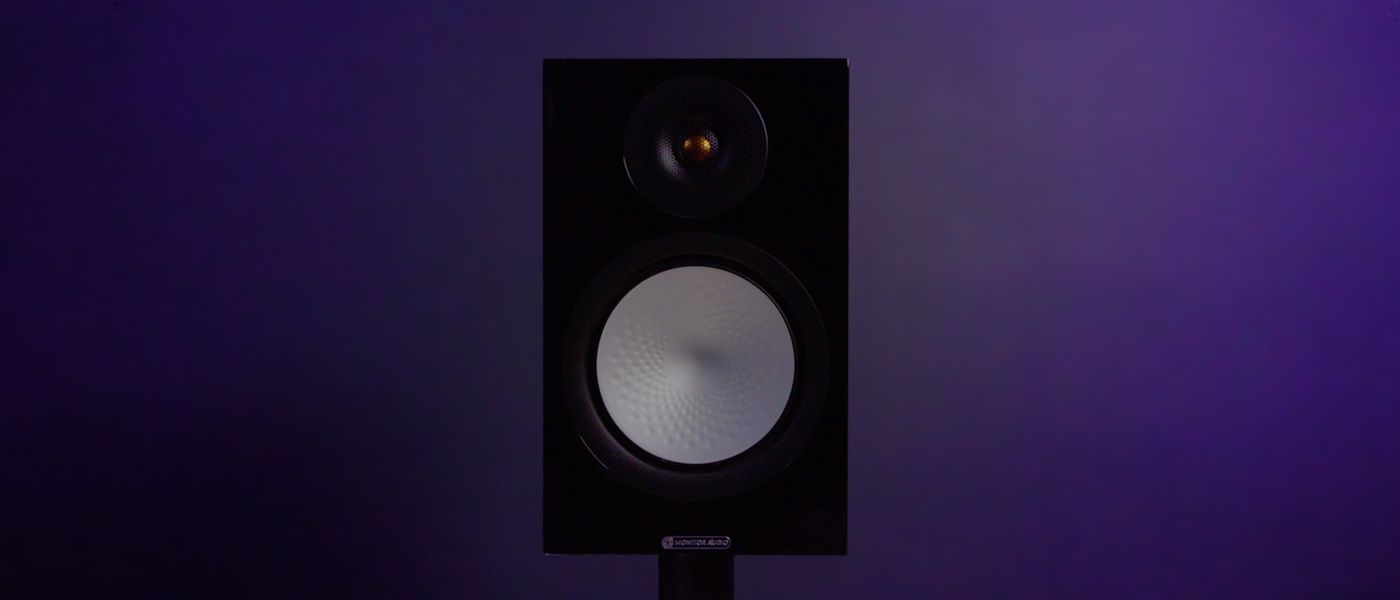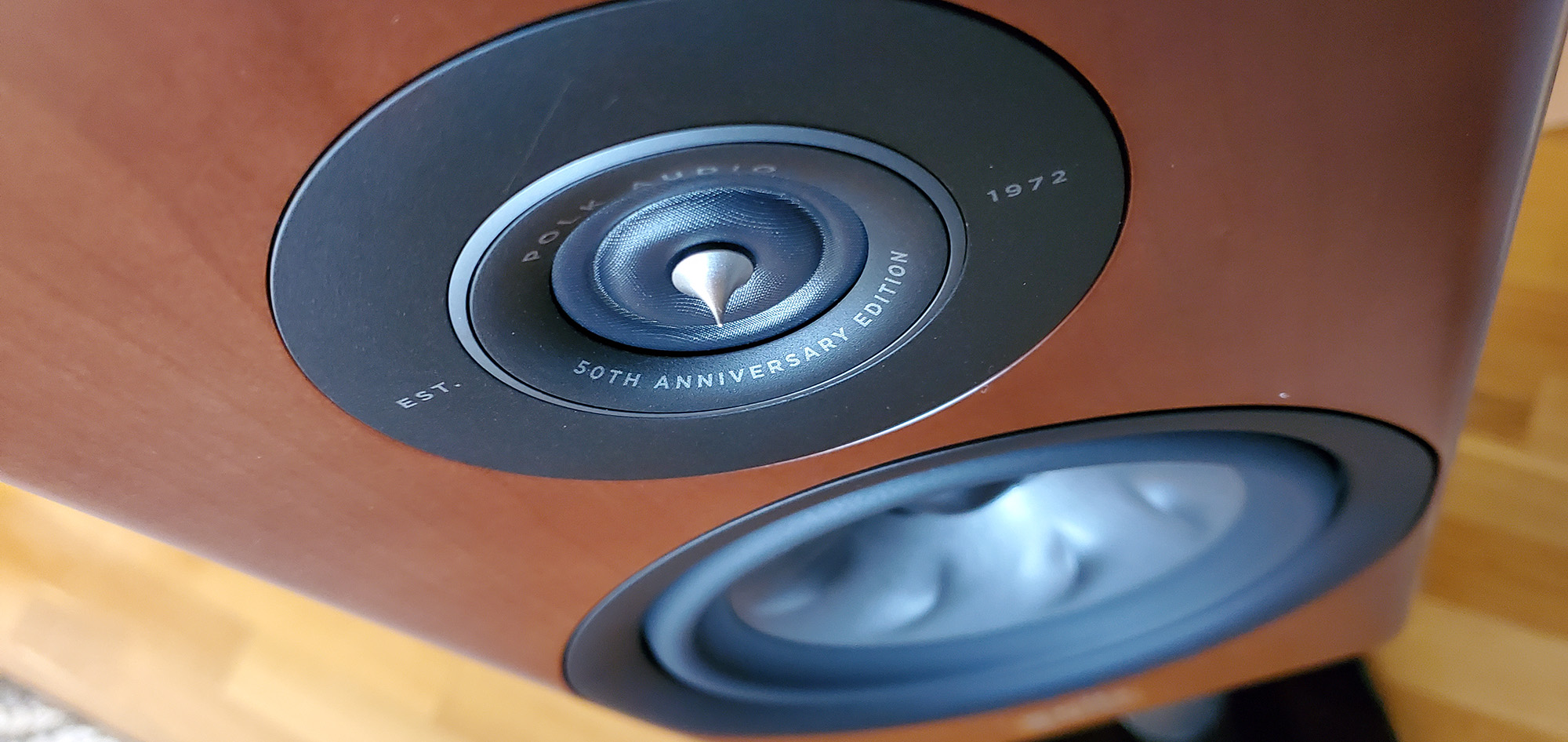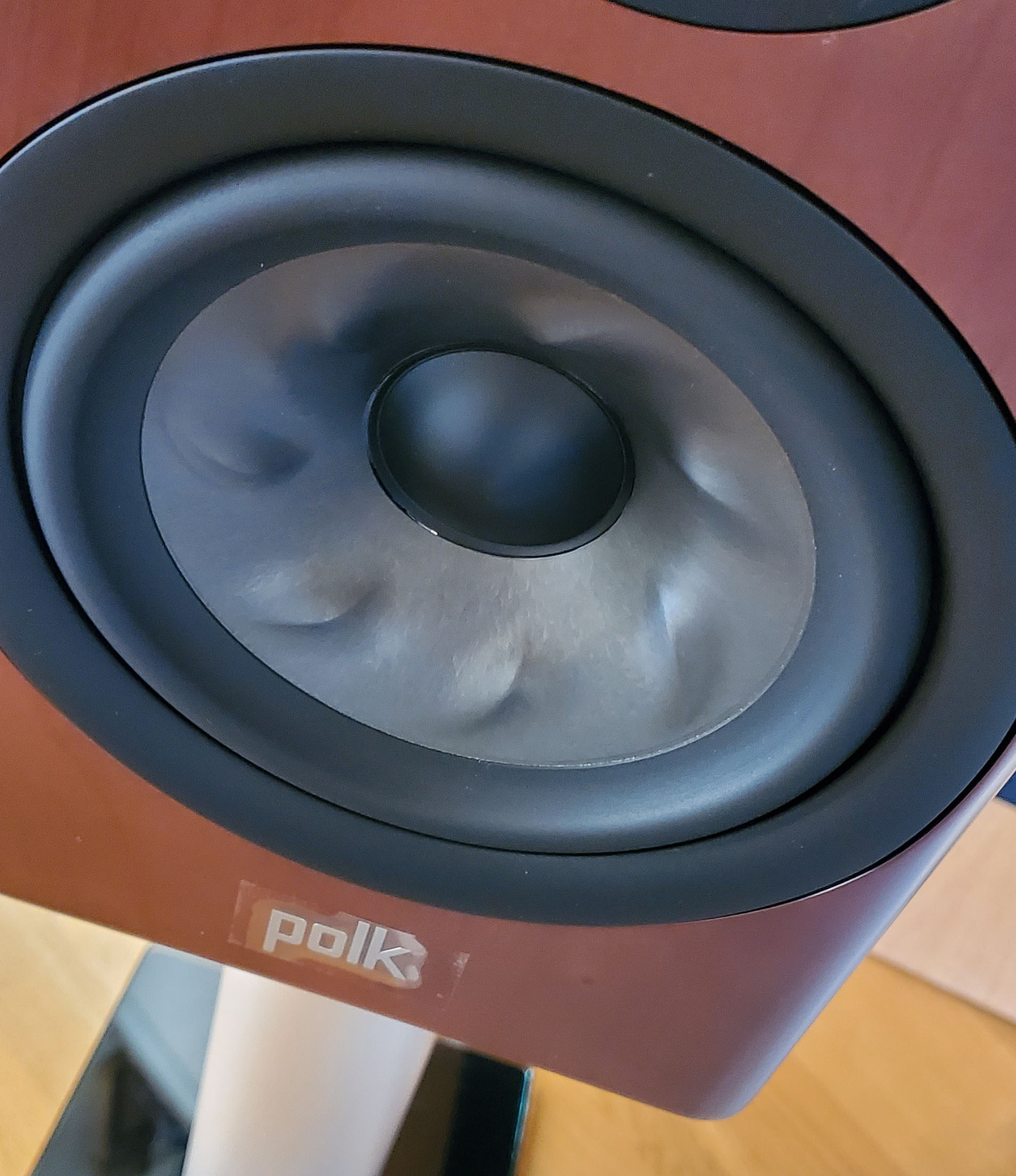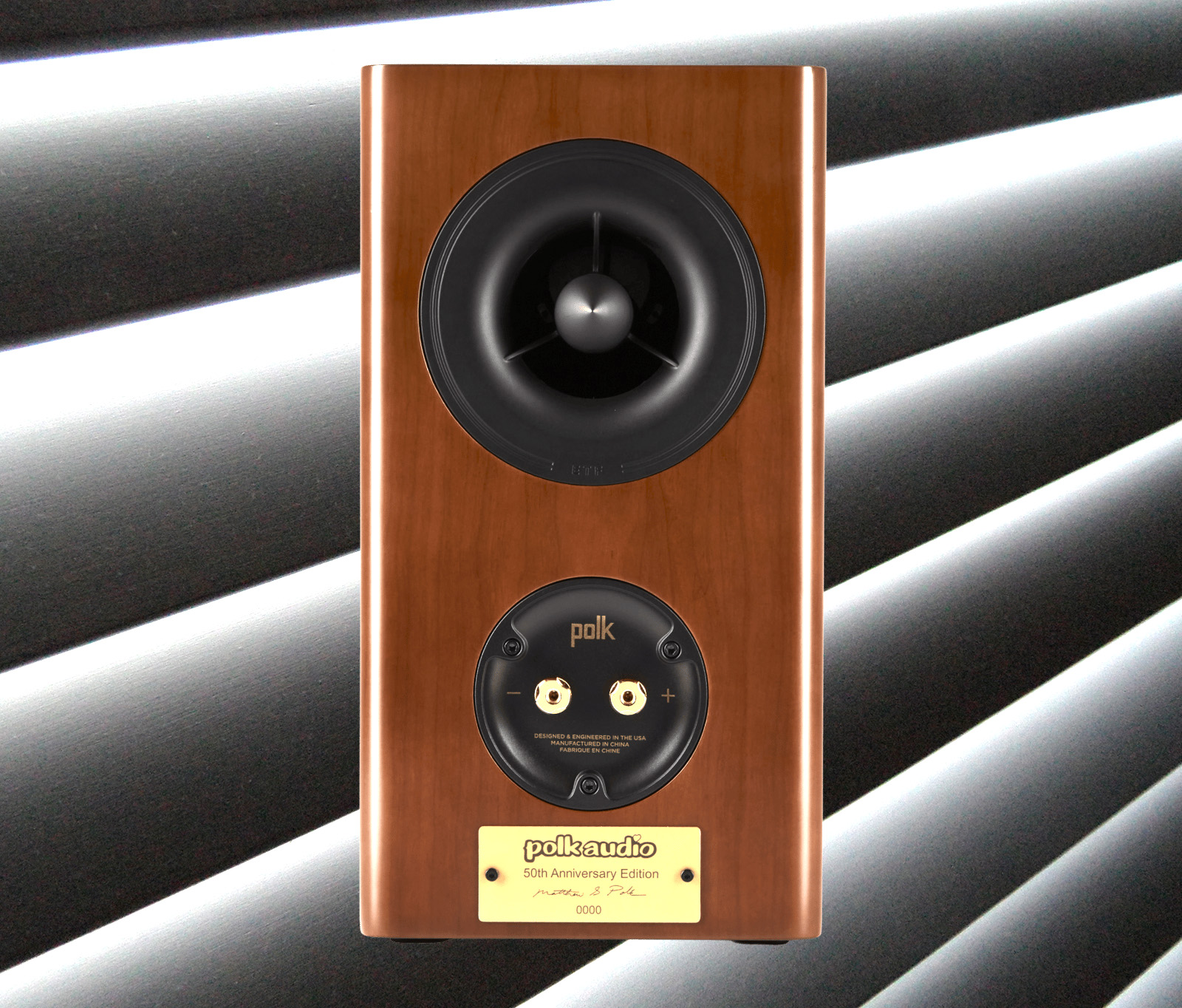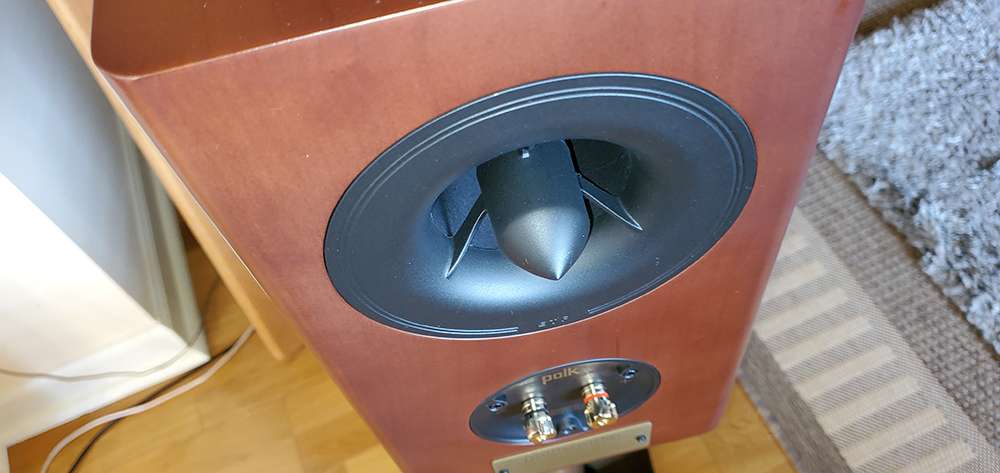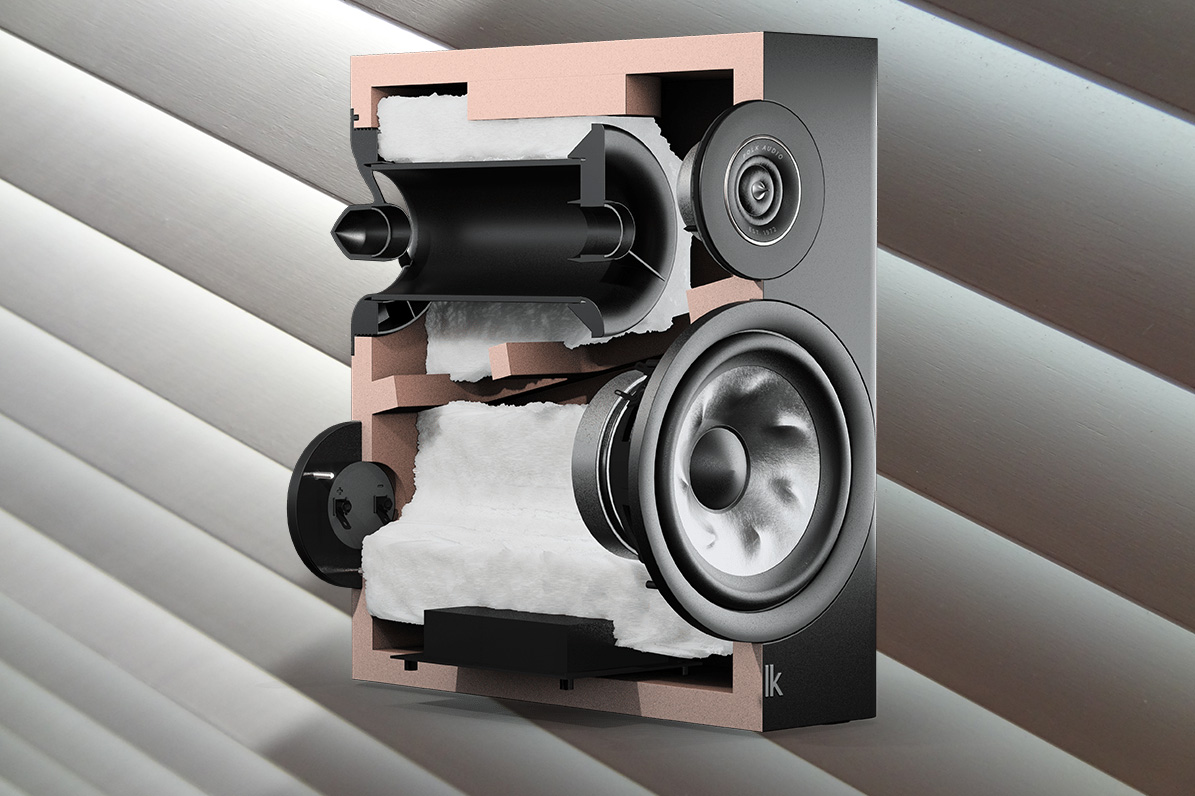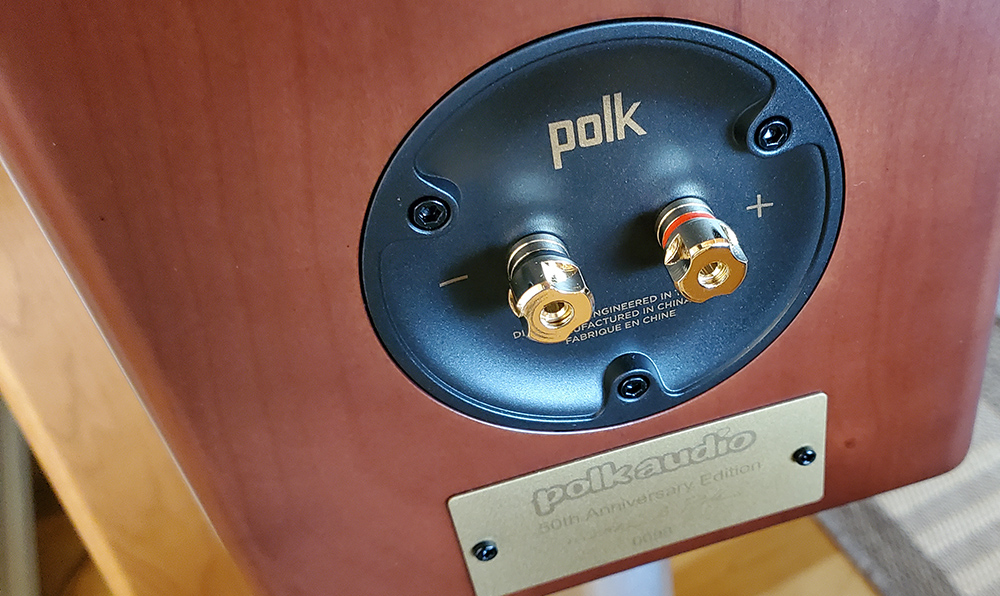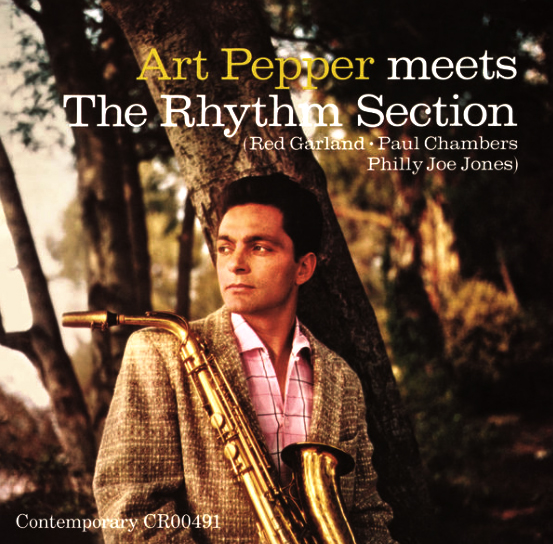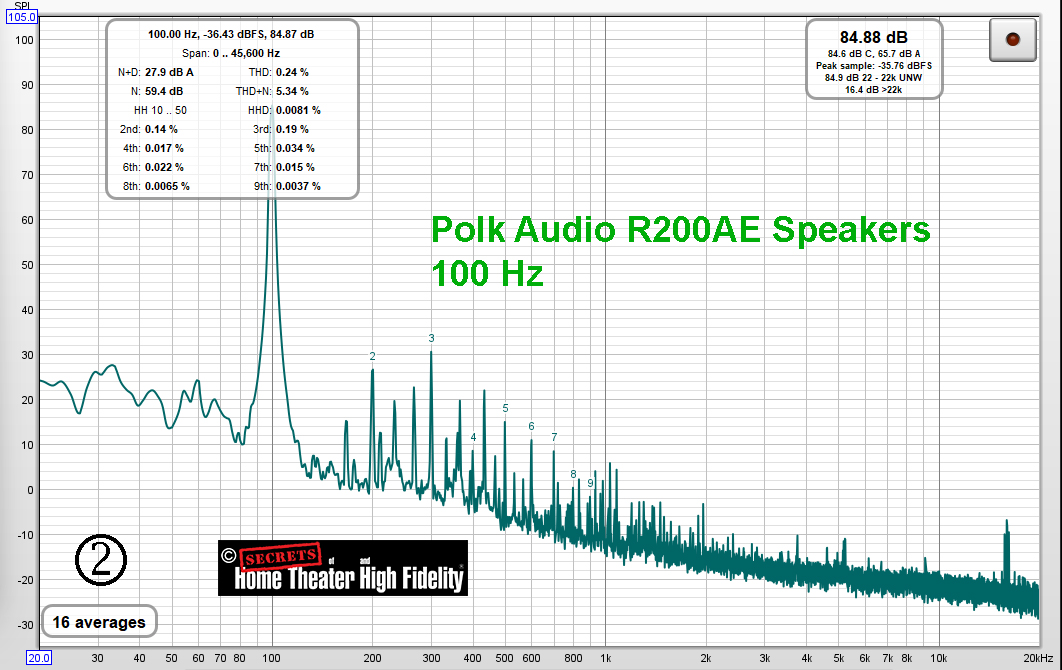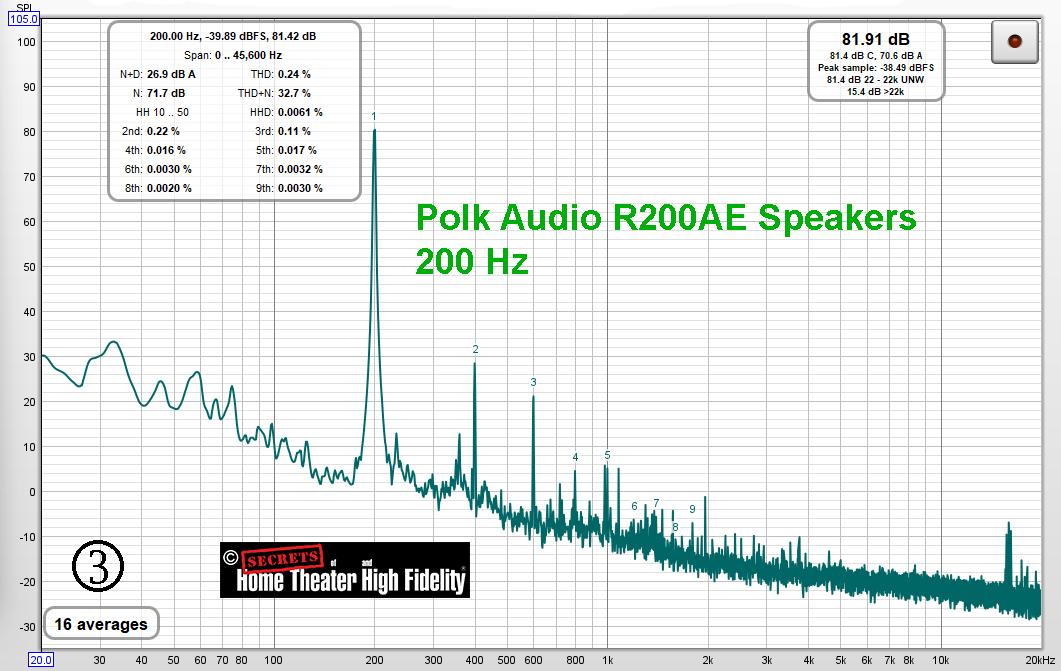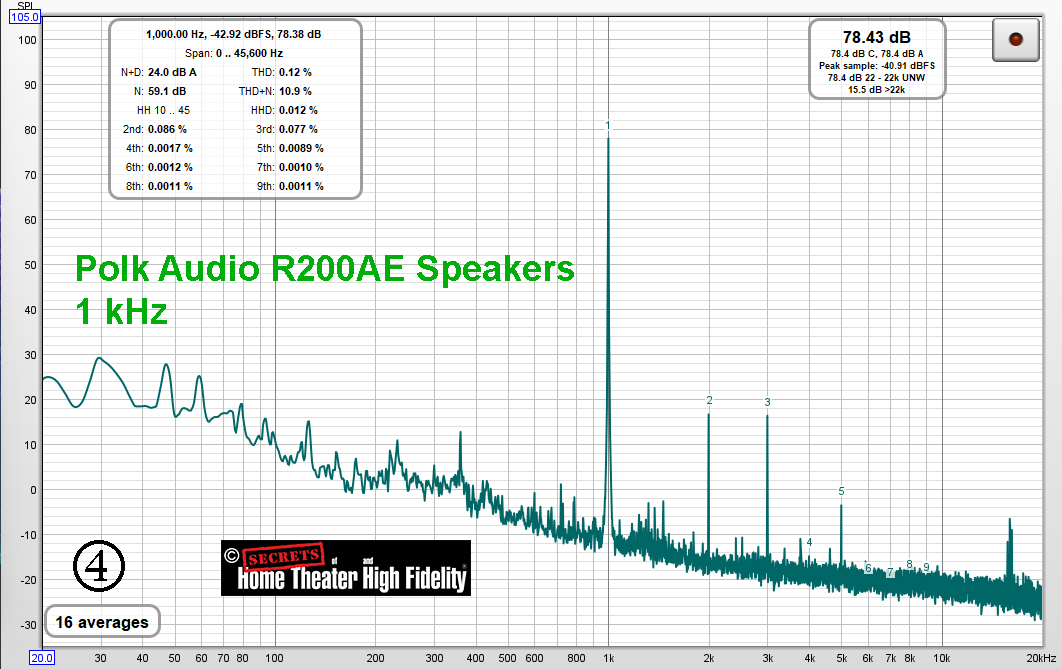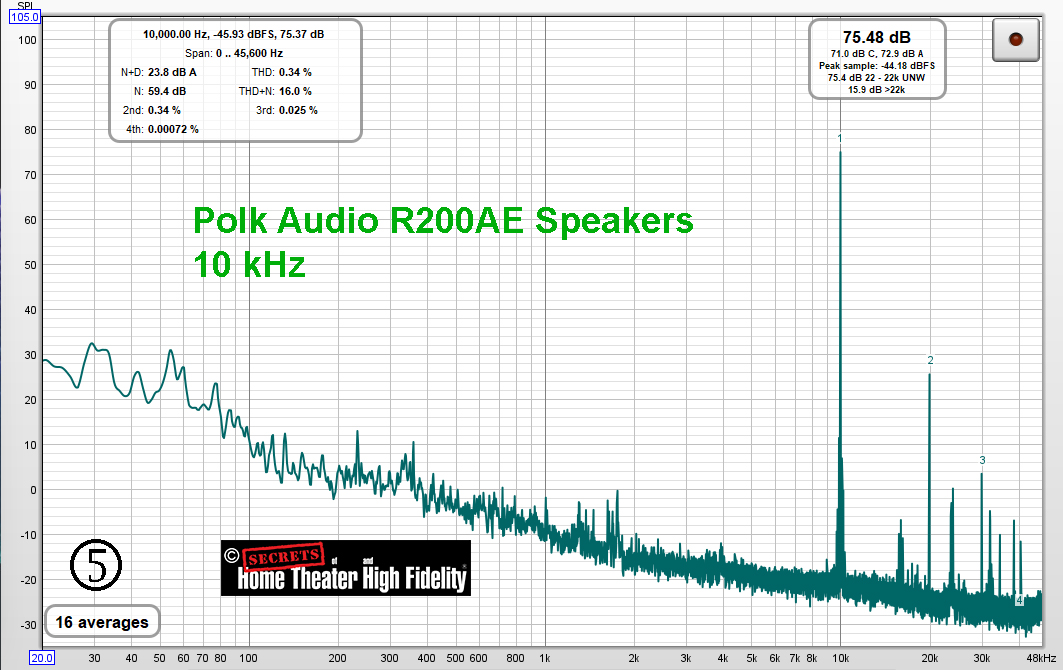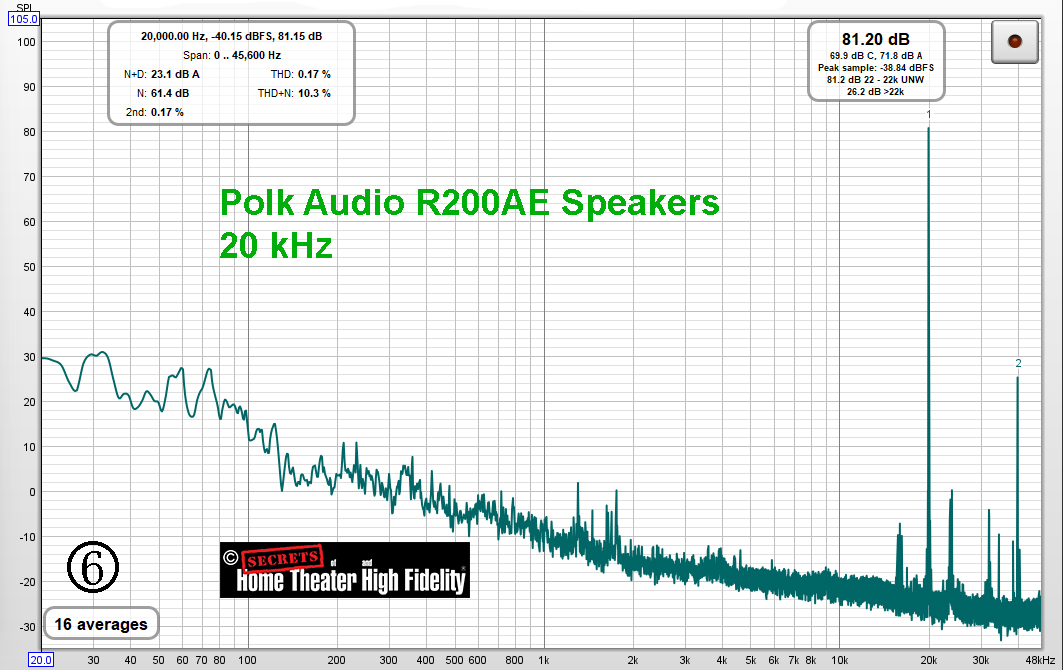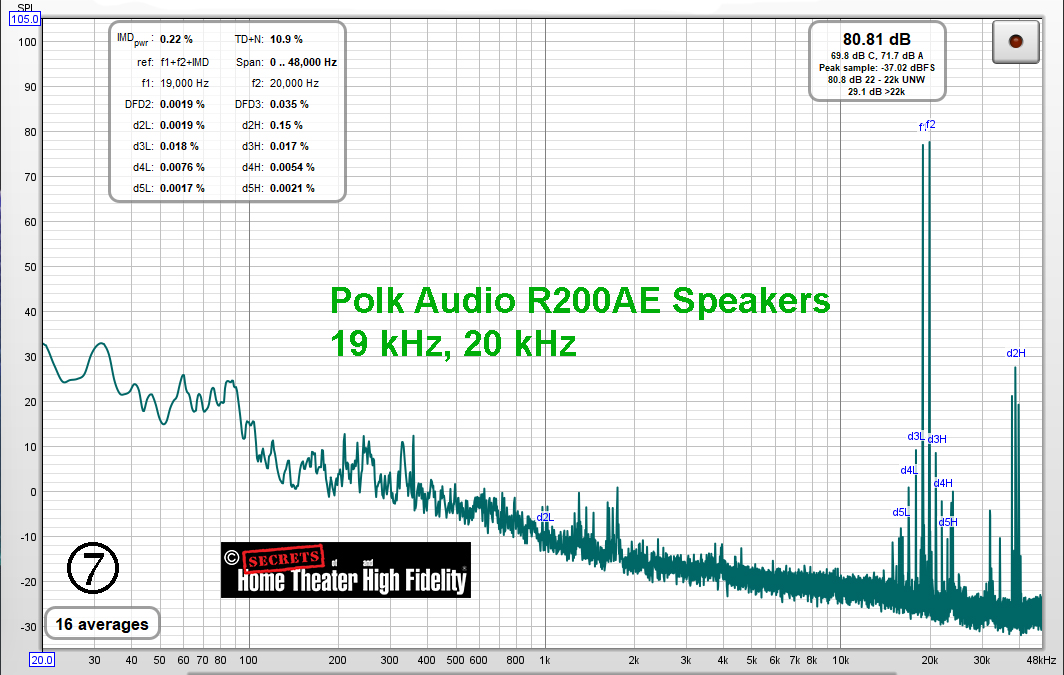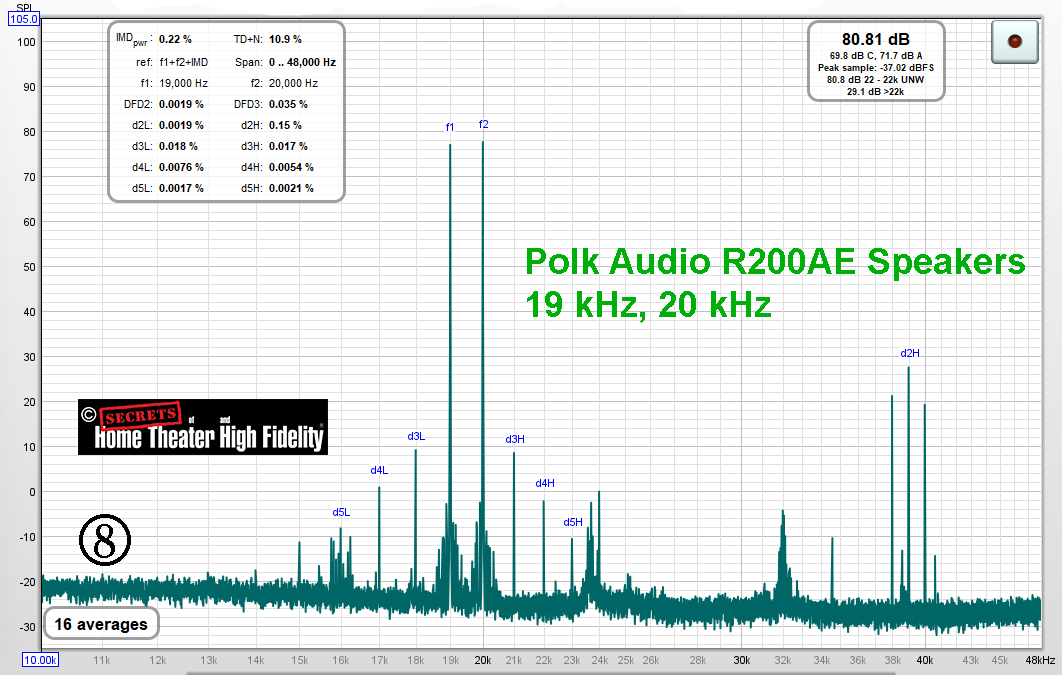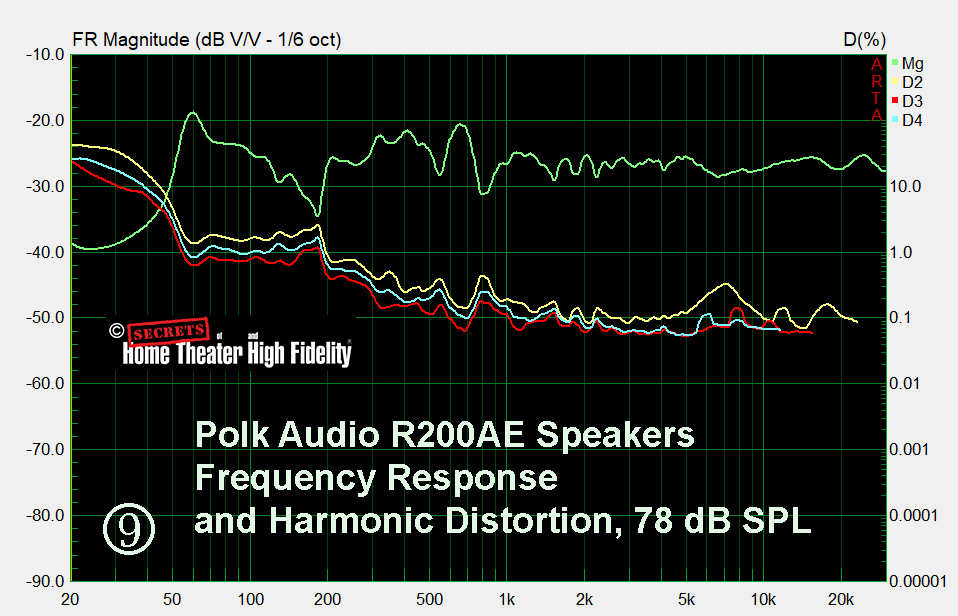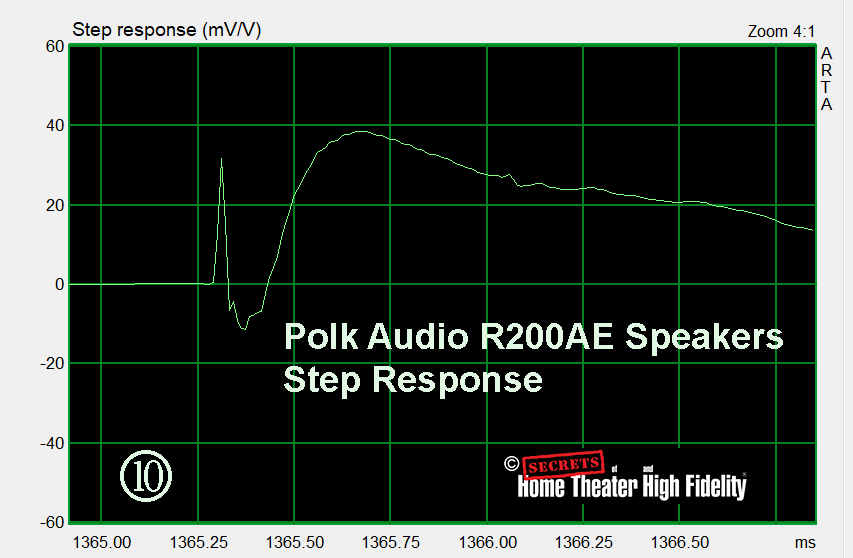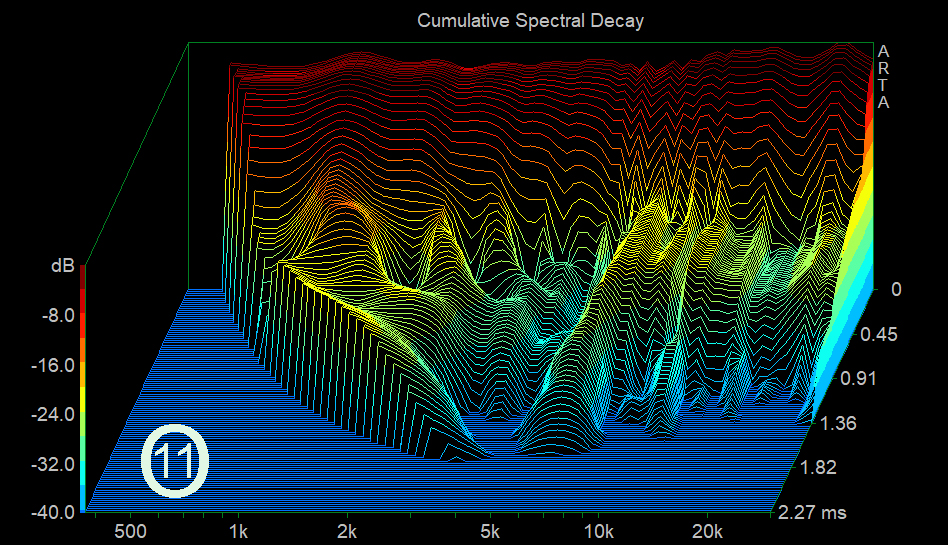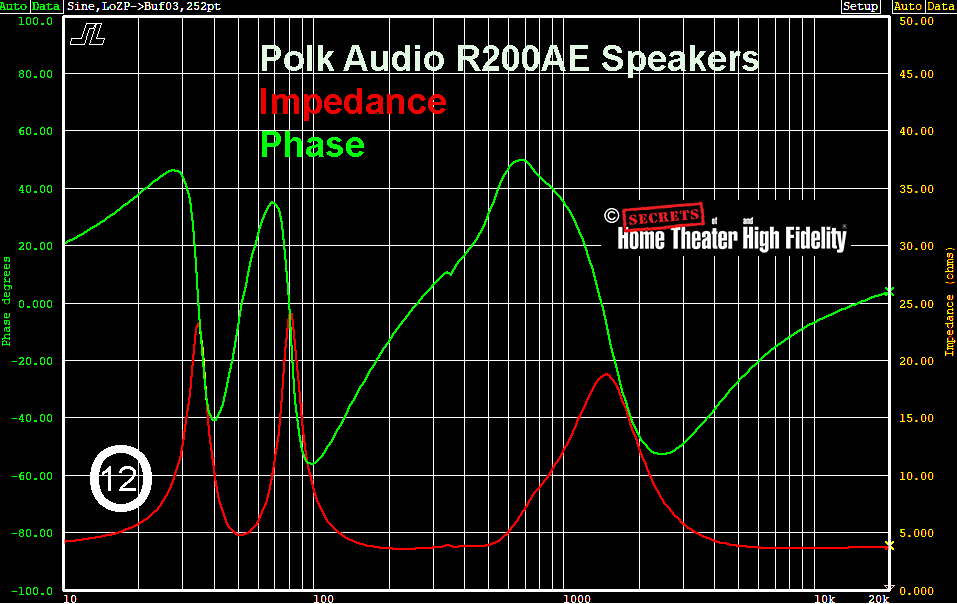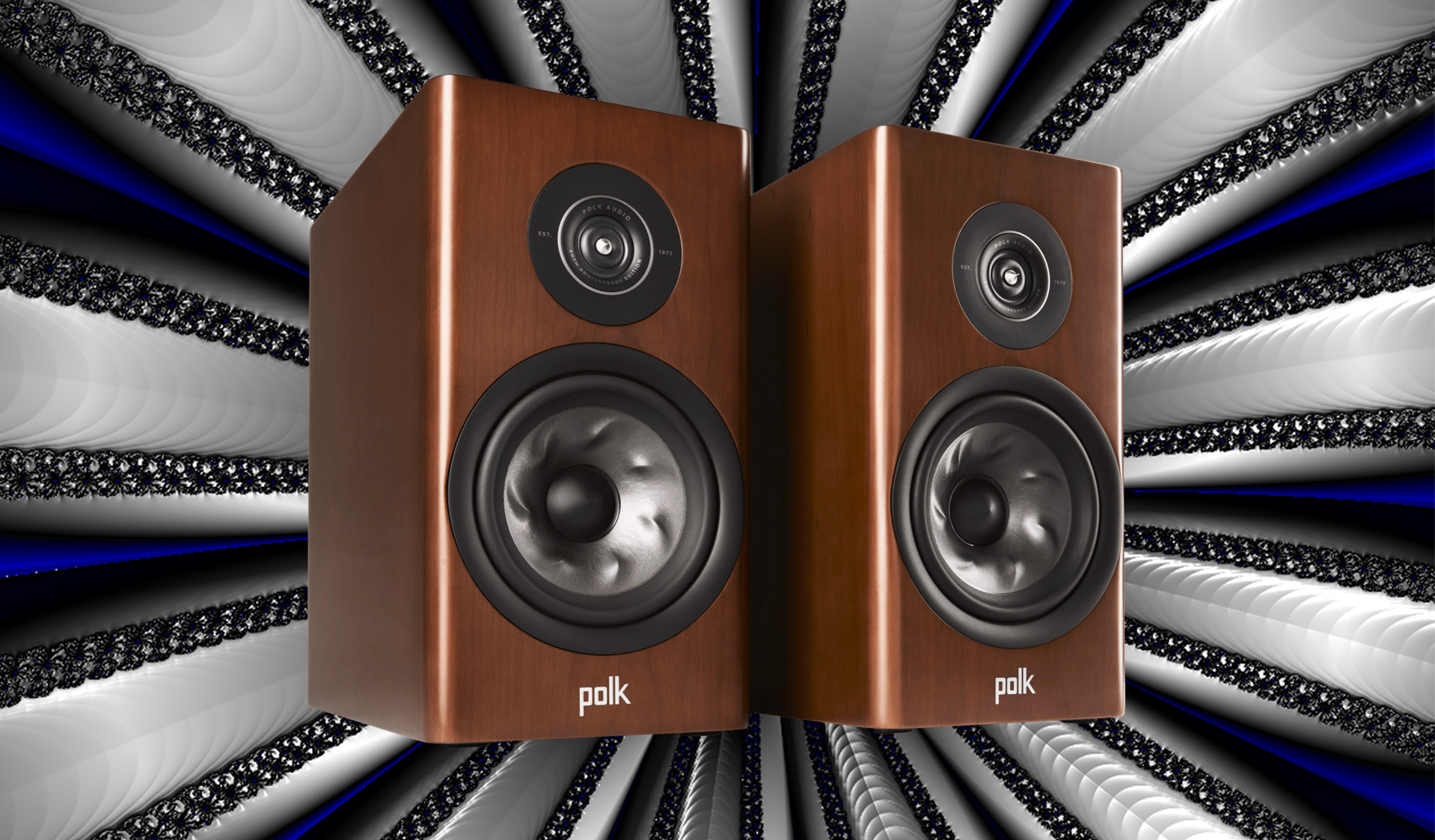Polk Audio R200AE Bookshelf Speakers Highlights
- Low Distortion
- Compact
- Real cherry wood veneer
- Upgraded crossover parts
A few months ago, I started a video series, “Stereo Audio & Home Theater 101+” where I described components that consumers new afficionados to the audio and video world might find useful in setting up a home theater. In “Video 3, The Speakers” I reviewed three models of bookshelf speakers which I recommended.
Subsequently, I found other models which I felt would be good choices and published Part II of the video series dealing with speakers.
So, now we continue on with Part III, which will have two speaker models. The first one is Polk Audio’s R200AE, which is their “Anniversary Edition” of the R200. “R” stands for “Reserve”.
Design:
Two-way bookshelf, ported on rear
Drivers:
One 1” pinnacle ring radiator
One 6.5” turbine cone
Crossover Frequency:
3 kHz
Binding Posts:
Large and heavy
Gold-plated
Frequency Response:
51 Hz – 38 kHz, minus 3 dB
Nomnial Impedance:
6 Ohms
Sensitivity:
86 dB @ 1 Watt, 1 Meter
Finish:
Cherry wood veneer
Dimensions:
7.5” W x 14.1” H x 13.9” D
190mm W x 359mm H x 353.8mm D
Weight:
19.1 pounds/each (8.7 kg)
MSRP:
$1,299/pair USD
Website:
https://www.polkaudio.com/
Company:
SECRETS Tags:
Bookshelf, Polk Audio, R200AE, speakers, stand-mount
The R200AE would be classified as “Bookshelf”, but in fact, such speakers are really designed to be stand-mounted, as shown below.
They are finished with real cherry wood veneer, an upgrade from the walnut fiber wrap on the R200.
The tweeter is called a “pinnacle ring radiator”, which means there is a curved tip in front of the driver to radiate the sound to a wider space in front of the tweeter, which has a fabric dome. It is called a “waveguide”. You can click on the photo to see the full-size version.
The 6.5” midrange/woofer has a very lightweight polymer composite cone with impressed spots to make it stiffer. The impressions are angled, giving it the “turbine” appearance. The turbine cone combines Polk’s proprietary foam core and polymer, molded with a turbine geometry which dramatically increases stiffness and damping, without adding mass, resulting in a smooth, detailed mid-range and effortless bass.
The speaker comes with a piece of protective tape covering the logo at the bottom. Have your spouse use her sharper fingernails to pull it off.
The rear port is an unusual design with flutes. This reduces turbulence and noise when deep notes are playing. The unique shape that protrudes from the port contains eigentone filters that are tuned to cancel port and cabinet resonance for an even more defined sound. An eigentone is a frequency that will cause resonance.
Here is a cross-sectional diagram of the port.
The binding posts are heavy and gold-plated. Gold plating is there because gold does not oxidize. Copper does oxidize on the surface which can reduce electrical conductivity between the post and the speaker cable. You can also see the engraved plate that specifies the manufacturing number of this particular pair in the Anniversary Edition series. Polk manufactured 200 pairs.
Some speakers are set up for bi-wiring/bi-amping by having two pairs of binding posts with a jumper connecting them. The binding posts on the R200AE speakers do not have that capability. It is not an important issue to me for small speakers.
The crossover parts were all upgraded in the R200AE from what they were in the R200. Here is a summary of the changes as described by one of the engineers at Polk:
“We started by changing all of the steel laminate core inductors to air core. “This results in a much larger coil to keep the DC resistance the same,” explains Scott Orth, Polk’s Director of Audio Acoustical Systems. “The effect of the change is lower distortion, especially at high levels. For me, this is the most significant change.”
Electrolytic capacitors in the mid-bass channel were upgraded to polyester metal film capacitors, and 100V polypropylene and 100V polyester film caps in the tweeter channel were upgraded to 250V and 100V polypropylene capacitors, respectively, leading to improved clarity and reduced distortion. We also increased the power rating of all resistors, for better stability with temperature; this is most apparent when the speaker is played hard.
We upgraded the PCB by both increasing copper thickness and increasing board size to accommodate the larger components and allow for wider traces. Quick-connect hardware was changed from nickel plating to gold plating for even lower circuitry losses, which were already very low as a baseline.”
The advantages of film capacitors include low dissipation factor, low inductance, no microphonics, higher surge voltage rating, constant capacitance across frequency range, and less rectification effect (rectification increases distortion). They do have low dielectric constant which means they have to be larger than electrolytic capacitors. They are also more expensive than electrolytic capacitors, which is why they are not often used. Air-core inductors do have lower distortion, but they are more expensive than steel (iron) core inductors, and that is why they are used less often.
I listened to the Polk Audio R200AE speakers using an OPPO UDP-205 Universal Player, Pass Labs XP-20 Stereo Preamplifier, Pass Labs X600.8 Monoblock Power Amplifiers, and Emotiva RMC-IL 9.1.6 Surround Sound Processor. Other amplifiers powered the additional channels.
I have a Pass Labs XP-20 preamplifier wired in with my OPPO UDP-205 player and Emotiva RMC-1L processor such that it is in series with the front left/right output from the processor to the Pass Labs X600.8 Power Amplifiers, but also direct from the UDP-205 to the XP-20 so that I can bypass the processor when listening to stereo music from the player. The signal also goes to the processor when I am doing this which allows the subwoofers to be active. In this case, I just do not turn on the other power amplifiers.
Musical choices included women voices, such as Debbie Harry, electronic music such as Star Trek, percussion of the renown Buddy Rich, violin, piccolo, and intense orchestral pieces such as Tchaikovsky’s 1812 Overture.
Art Pepper “Art Pepper Meets the Rhythm Section”
Playing my standard test album, Art Pepper Meets the Rhythm Section, I noticed the strength of the string bass. The R200AE’s seem to have quite a bit of it, which shows in the 60 Hz – 200 Hz sine wave bench tests (the volume level was louder than at other frequencies). And, it was not boomy at all. So, for small stereo setups, this speaker can deliver musical bass (not pipe organ or spaceship sound effects) without a subwoofer. Just be careful with that volume control. I use this album in many of my reviews because I know what it should sound like.
The R200AE is a small, but powerful speaker. It did well with my test recordings, but it is intended for smaller setups. I was surprised at the amount of bass output. However, I would still suggest crossing the speakers over to a subwoofer, at 60-70 Hz, just as I do for any average size (and price) bookshelf speaker. This will improve upper bass sound quality because the driver is not simultaneously trying to output low bass.
“All Quiet on the Western Front”
I also watched a couple of movies using the Polk 200AE’s. If you have not seen All Quiet on the Western Front (2022), you should. It will instill a fear of war that we all need to have.
I would say that the R200AE’s serve better as surrounds rather than the front left/right positions, but that is just because I like a big presentation in the front. For a small home theater setup, they would be fine, but I still suggest using a nice subwoofer to handle everything below 60-70 Hz. In fact, I have very large front left/right speakers, and I still cross them over to three subwoofers at 50 Hz. If you are going for Polk speakers all the way around, choose a pair of their floor-standing models for the front left/right channels. This will give you a proper soundstage for the huge sound effects in movies. We reviewed some of these recently.
For high frequency musical instruments, the R200AE’s did well. No harshness at all. You will see this in the bench tests, i.e., they had low distortion across the board. Debbie Harry’s voice sounded very natural.
Full orchestral music also worked nicely with these speakers. Just keep in mind the volume control when such music is reproduced on small speakers.
First, the single-frequency distortion tests. One R200AE was placed on a speaker stand, with the calibrated laboratory microphone situated 1 meter away, on-axis pointed at a spot in between the tweeter and the woofer.
I set the volume control to output 1 kHz at 78 dB SPL and then measured other frequencies without changing the volume control. Figure 1 below shows that, at 60 Hz and 89.45 dB, THD was 0.13%, and the 2nd-ordered harmonic was higher than the third. This is a good sign. It means the woofer was not straining. The harmonics are numbered just above the tip of each harmonic. You can click on each graph to see the details of the harmonics listed at the top left of each graph.
At 100 Hz and 85 dB (Figure 2), THD was a bit higher at 0.24%, and the 3rd-ordered harmonic was higher than the 2nd.
200 Hz and 82 dB (Figure 3) THD also was 0.24% but the 2nd-ordered harmonic was back to being larger than the 3rd. This all has to do with the port tuning and the size of the enclosure. Note that the test frequency is labeled as the 1st-ordered harmonic. What this actually means is that there is a harmonic at the test frequency that is generated, but it is on top of the test frequency.
At 1 kHz and 78 dB (Figure 4), THD was 0.12%. 2nd and 3rd-ordered harmonics were the same size.
Moving on to the tweeter (crossed over to the woofer at 3 kHz, we look at 10 kHz and 75.48 dB (Figure 5). THD was 0.34%. The 2nd-ordered harmonic was much larger than the 2nd. This is important because it implies low harshness to the sound of instruments that primarily create high frequencies, such as violin, and that is what I heard.
And, at 20 kHz, THD was 0.17% (Figure 6).
Using 19 kHz and 20 kHz sine waves together is a common test for audio electronics such as power amplifiers. I have begun using this test with speakers.
Figure 7 below shows the results.
Here (Figure 8) is a closeup of the interaction between the two frequencies. It shows a pattern that is similar to a good amplifier.
The Frequency Response and THD derived from an impulse response are shown in Figure 9, below. There is a suckout (dip) at about 190 Hz. This is very common and is caused by the room, not the speakers. The response is within 10 dB all the way out to 30 Hz. I am impressed! Distortion stays below 1% from about 200 Hz to 30 kHz. Notice that the 2nd-ordered harmonic (yellow line) is the predominant one throughout most of the entire frequency response. That’s good because it produces a very pleasing sound.
Because of the relatively flat frequency response, this speaker’s output should be easy to adjust with room correction in your home theater processor, assuming you don’t have major room problems.
The Step Response (Figure 10 below) indicates that the tweeter and woofer are in phase.
A Cumulative Spectral Display (CSD) shown in Figure 11, shows some resonance in the enclosure and drivers, but it is an average amount for this type of speaker.
The Impedance/Phase plot is shown below in Figure 12. Impedance has a high of 24 Ohms at 80 Hz and a low of 3.8 Ohms at 200 Hz. Phase is +490 at 700 Hz and -550 at 100 Hz.
Polk’s anniversary edition of their classic R200 speakers are very well constructed and sound excellent. For a small home theater, they can serve as front main left and right speakers, but in large home theaters, use them as surround speakers. Put them on stands because wall-mounting would block the port on the rear.
- Flat response
- Low distortion
- Compact
- Conservative finish
- I have no suggestions at this price
Question and Answer Session with Polk Engineer Carl Jacobson
1. When was Polk Audio founded and what were your first products?
2. What was your target customer base?
Polk was founded in Baltimore on June 20th, 1972 by three John Hopkins University students, Matthew Polk, George Klopfer, and Sandy Gross. Initially, they had been asked to make a live sound PA system for a bluegrass convention, so their first products were live sound speakers. They quickly realized that they could make great sound available to more people if they focused on the home hi-fi market, and by 1974, they released the Monitor 7 speakers for the enjoyment of music in the home. (Interesting side note: Sandy went on to found Definitive Technology in 1990.)
3. Is your customer base the same now?
Polk doesn’t make live sound speakers today, but that energy of a live performance is still something that we embody in our products. Our customers today are anyone who appreciates great sound at a great value, and we provide that through component speakers, sound bars, install audio, all-weather outdoor speakers, car and boat audio. Our customer base starts with people just starting their voyage into better sounding audio, who could be adding a Polk Signa sound bar system to their TV so they can finally hear the dialogue and experience some bass impact when they watch a movie, or perhaps setting up their first hi-fi system with a pair of Monitor XT or Signature Elite bookshelf speakers. At the upper end, you’ll find audio enthusiasts and cinephiles looking for a high-end dedicated component set up for their Dolby Atmos home theater who would choose our Legend or Reserve series.
4. The R200AE speakers that I reviewed have upgraded crossover parts that make a difference in the sound. Do you have plans for new models that will have higher grade parts?
One thing that’s true about Polk is that we’re constantly innovating with each new design. There’s a saying “a work of art is never finished, it’s just put down,” and our speaker design philosophy is like that. The crossover network in the R200AE is a perfect example. After shipping the original R200, Scott Orth, our Director of Acoustical Systems, had some ideas on how we could make the crossovers better. When we were planning the special anniversary edition and were looking for ways to make it special, that presented the perfect opportunity for him to implement those ideas.
This spirit of innovation, however, isn’t always limited to using higher grade parts. In fact, one of Polk’s founding principles was to engineer our speakers better, through testing and iteration, so that we could make ordinary materials sound extraordinary. An example of this is the Turbine Cone design found in the R200’s woofer (and in all models in the Legend and Reserve series). The ridged design is based on an earlier woofer found in our older LSiM speakers, but for this current version of the woofer, we used computer-aided modeling, 3D printing, and extensive testing that resulted in 23 different variations of the design before we got the performance we were looking for.
If you’re curious to learn more about the turbine cone check out this video https://www.youtube.com/watch?v=RsakgqAab_A
5. Tell me about the physics of the fluted port that you have on some of your speakers, including the R200AE.
The port on the R200AE is called the X-Port. Ports on speakers allow air to escape from the cabinet, which provides more bass output. Ordinary ported designs have a problem though; they can introduce a chuffing noise which masks the midrange. The fluted design on the X-Port smooths airflow as it exits the speaker cabinet, reducing noise, resulting in louder bass, and a cleaner more defined midrange. The X-Port has some more secret sauce that is not obvious by looking at it. Inside the X-Port are tubes called eigentone filters. Through advanced acoustical analysis, we identified internal resonances within the R200 speaker cabinet. The eigentone filters are tuned to match those resonant frequencies but done so to be out of phase with the resonance of the cabinet, thereby cancelling them out…this is a similar effect to how noise cancelling headphones work. A great explanation of these technologies can be seen in this video: https://www.youtube.com/watch?v=IbRGhUz6z2s
6. Is the crossover 1st order, 2nd order, or 3rd order?
Based on componentry, the R200AE’s crossover uses a 3rd order high-pass on the tweeter and a 2nd order low-pass on the woofer.
7. Is the entire speaker machine-assembled to keep the cost reasonable?
No, the nature of some individual components in the speaker requires machine assembly, but the overall, complete speaker is hand assembled.
8. Do you use an anechoic chamber for testing?
Yes, we do. But we also test in non-anechoic spaces that emulate actual living rooms to validate listening experiences in real world environments.


